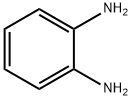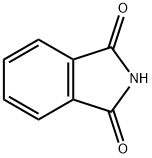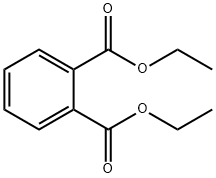A6644312
o-Phenylenediamine , 99%, for biochemical research , 95-54-5
Synonym(s):
1,2-Diaminobenzene;1,2-Phenylendiamine;1,2-Phenylenediamine;OPD
CAS NO.:95-54-5
Empirical Formula: C6H8N2
Molecular Weight: 108.14
MDL number: MFCD00007721
EINECS: 202-430-6
Update time: 2022-07-08
PRODUCT Properties
| Melting point: | 100-102 °C |
| Boiling point: | 256-258 °C |
| bulk density | 530kg/m3 |
| Density | 1,27 g/cm3 |
| vapor density | 3.7 (vs air) |
| vapor pressure | 0.01 mm Hg ( 25 °C) |
| refractive index | 1.6339 (estimate) |
| Flash point: | 110°C |
| storage temp. | 2-8°C |
| solubility | H2O: 1 tablet/10 mL, clear, colorless |
| form | tablet |
| Colour Index | 76010 |
| pka | 4.46(at 25℃) |
| color | white to off-white |
| PH Range | Green Q uorescence (3.1) to nonQ uorescence (4.4) |
| PH | 7-8 (50g/l, H2O, 20℃) |
| explosive limit | 1.5%(V) |
| Water Solubility | <0.1 g/100 mL at 20 ºC |
| Sensitive | Air & Light Sensitive |
| Merck | 14,7284 |
| BRN | 606074 |
| Exposure limits | TLV-TWA 0.1 mg/m3; carcinogenicity: A2-
Suspected Human Carcinogen (ACGIH
1989). |
| Stability: | Stable. Incompatible with strong oxidizing agents. |
| Major Application | bottom antireflective coatings, semiconductor devices, hair dyes, detecting antibody, substrate for horseantibody, glucose, streptomycin, penicillin, sulfonamide, neuroglobin, substrate for horseradish peroxidase |
| LogP | 0.12-0.17 at 20-25℃ and pH7-8 |
| CAS DataBase Reference | 95-54-5(CAS DataBase Reference) |
| IARC | 2B (Vol. 123) 2020 |
| NIST Chemistry Reference | 1,2-Benzenediamine(95-54-5) |
| EPA Substance Registry System | 1,2-Phenylenediamine (95-54-5) |
Description and Uses
o-Phenylenediamine is an amino substituted benzene used in the manufacture of dyes. Potential use in sensitive immunosensor for cancer biomarker.Environmental toxin on US EPA Toxic Release Inventory list (TRI) list.
Safety
| Symbol(GHS) |    GHS06,GHS08,GHS09 |
| Signal word | Danger |
| Hazard statements | H301-H317-H319-H341-H351-H410 |
| Precautionary statements | P202-P273-P280-P301+P310-P302+P352-P305+P351+P338 |
| Hazard Codes | T,N |
| Risk Statements | 20/21-25-36-40-43-50/53-68 |
| Safety Statements | 28-36/37-45-60-61-1/2 |
| RIDADR | UN 1673 6.1/PG 3 |
| WGK Germany | 3 |
| RTECS | SS7875000 |
| F | 8-10-23 |
| Autoignition Temperature | 540 °C |
| TSCA | Yes |
| HazardClass | 6.1 |
| PackingGroup | III |
| HS Code | 29215119 |
| Hazardous Substances Data | 95-54-5(Hazardous Substances Data) |
| Toxicity | LD50 in rats (mg/kg): 1070 orally; 516 i.p., C. Burnett et al., J. Toxicol. Environ. Health 2, 657 (1977) |



